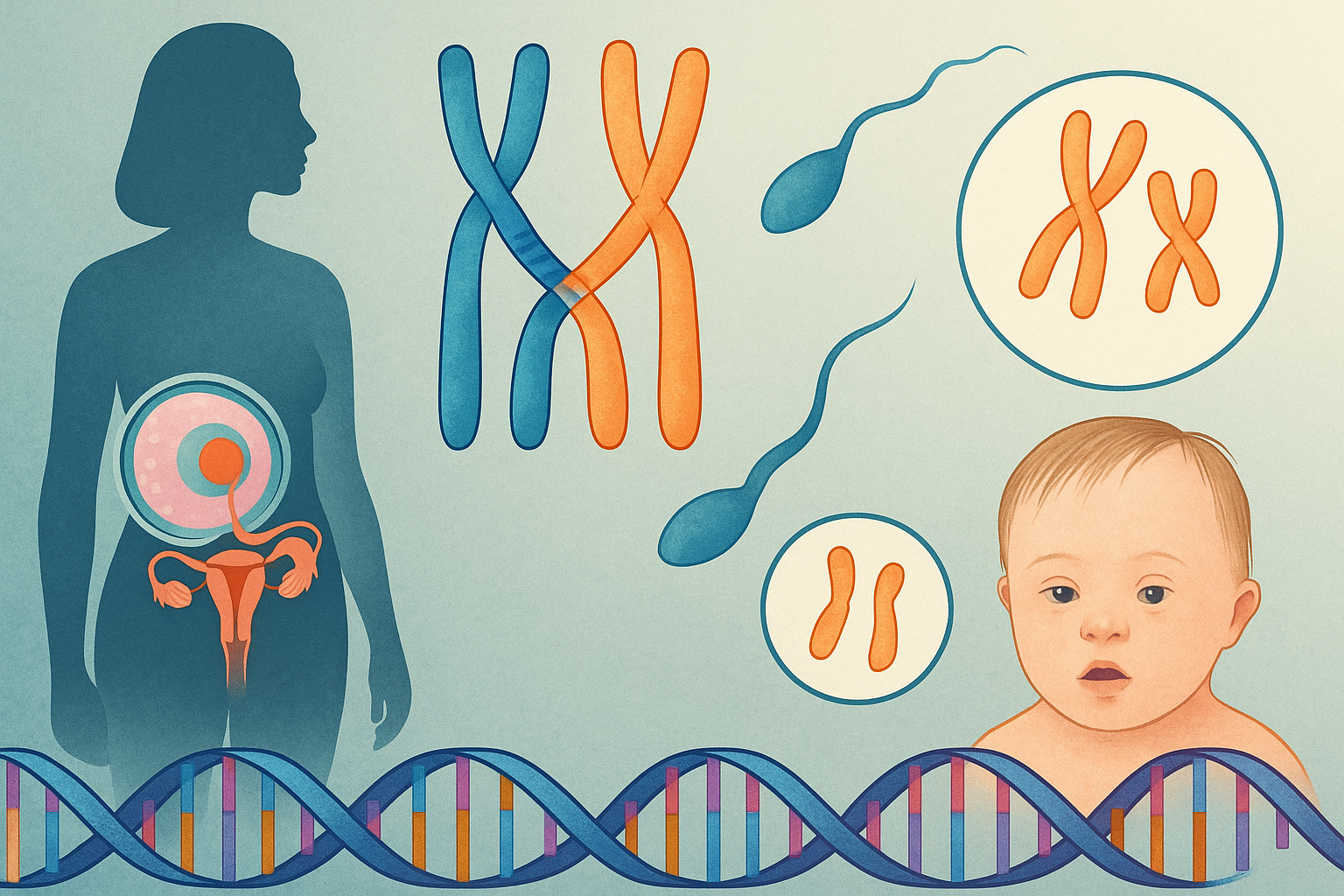
Miscarriages, Down Syndrome, and Infertility Linked to Hidden DNA Process
A hidden DNA process plays a crucial role in shaping fertility, pregnancy outcomes, and the risk of genetic disorders. The quality of egg cells depends on events that began while a woman was still developing in her mother’s womb. During this stage, chromosomes in egg cells must be cut, repaired, and sorted with precision. In men, the same process creates sperm, but it begins only after puberty.
Mistakes in this DNA mechanism can cause infertility, miscarriage, or conditions such as Down syndrome. Recent research published in Nature highlights how proteins safeguard chromosome pairing, ensuring accurate sorting during egg and sperm development.
How DNA Repair Shapes Fertility
Humans carry 46 chromosomes, arranged in 23 pairs. Early in egg or sperm development, these chromosomes line up and swap segments in a process called chromosome crossover. This DNA repair step serves two critical purposes:
- It shuffles genetic material to create diversity.
- It binds chromosome pairs together, guiding them through proper cell division.
In females, crossovers are especially important because immature egg cells remain in suspended development for decades until ovulation. Maintaining these DNA connections over time reduces the risk of chromosomal errors.
Crossovers, Chromosome Errors, and Miscarriage
Chromosomes connect through DNA links called double Holliday junctions. These junctions ensure pairs stay aligned until separation. If an egg cell loses these connections, chromosomes may mis-segregate. As a result, eggs can end up with missing or extra chromosomes.
This type of error contributes to infertility, repeated miscarriages, or genetic disorders such as Down syndrome, where a child inherits an extra chromosome 21. Symptoms may include developmental delays, heart problems, and hearing loss.
From Yeast Models to Human Fertility Genetics
To study this hidden DNA process, scientists use budding yeast, a model organism that shares conserved chromosome biology with humans. Using advanced imaging and genetic engineering, researchers tracked proteins that control DNA junctions.
Key findings show that cohesin proteins protect these junctions from premature breakdown by enzymes such as the Bloom complex. Without this protection, crossovers fail to form, leading to reproductive errors.
Why Understanding This DNA Process Matters
Identifying how this hidden DNA process works provides new insights into infertility, miscarriage, and genetic disease prevention. By understanding the proteins that safeguard chromosome crossovers, researchers open the door to better fertility treatments and diagnostic tools.
Read: Tylenol in Pregnancy and Autism Risk: Harvard Study Findings.






